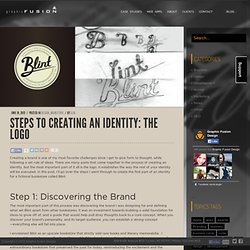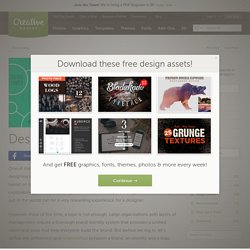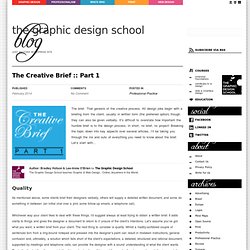

Steps to Creating an Identity from Lisa at Graphic Fusion Design. Creating a brand is one of my most favorite challenges since I get to give form to thought, while following a set rule of ideas.

There are many parts that come together in the process of creating an identity, but the most important part of it all is the logo. It establishes the way the rest of your identity will be executed. In this post, I’ll go over the steps I went through to create the first part of an identity for a fictional bookstore called Blint. Step 1: Discovering the Brand The most important part of this process was discovering the brand I was designing for and defining what set Blint apart from other bookstores.
I envisioned Blint as an upscale bookstore that strictly sold rare books and literary memorabilia. Step 2: Developing Sketches Right off the bat I knew that Blint deserved a logotype that was just as unique as the brand. Designing a Brand Identity. One of the most interesting projects that a graphic designer can take on is designing a logo.

It can be daunting (and stressful) to come up with logo options based on market research, and stumble upon some "design magic" through the exploratory process. Narrowing it down to a final approved logo and then seeing it out in the world can be a very rewarding experience for a designer. However, most of the time, a logo is not enough.
Reference Curating. Insect Lab Studio. 7 Design Process Steps Designers Should Follow. Whenever you start a project, you should have a good idea/understanding of what you will do.

Things like research, strategy, checkups, changes, and everything else that come along when dealing with clients. Most designers have a certain path that they take for every single project. For those who don’t, we made a great design process guide to help. You can follow this route for almost every type of design project. So if you’re a designer that needs navigation, this blueprint should definitely help!
1. . - Client identifies needs or goals - Client develops preliminary budget - Client and designer meet for preliminary discussions and portfolio review (face to face meeting or use of social media out-lets such as Skype is an alternative if client and designer are unable to meet face to face) - Designer typically requests deposit payment on the project 2. . - Client provides any relevant background information and materials - Designer leads client through creative briefing 3. 4. 5. 6. 7.
The Graphic Design School's Blog. The brief.

That genesis of the creative process. All design jobs begin with a briefing from the client, usually in written form (the preferred option) though they can also be given verbally. It’s difficult to overstate how important the humble brief is to the design process. In short, no brief, no project! Breaking the topic down into key aspects over several articles, I’ll be taking you through the ins and outs of everything you need to know about the brief. Author: Bradley Hotson & Lee-Anne O'Brien for The Graphic Design SchoolThe Graphic Design School teaches Graphic & Web Design , Online, Anywhere in the World.
Quality As mentioned above, some clients brief their designers verbally, others will supply a detailed written document, and some do something in between (an initial chat over a pint, some follow-up emails, a telephone call). Whichever way your client likes to deal with these things, I’d suggest always at least trying to obtain a written brief. An example of a good brief Summary. Blom & Blom — Industrial Authentics.